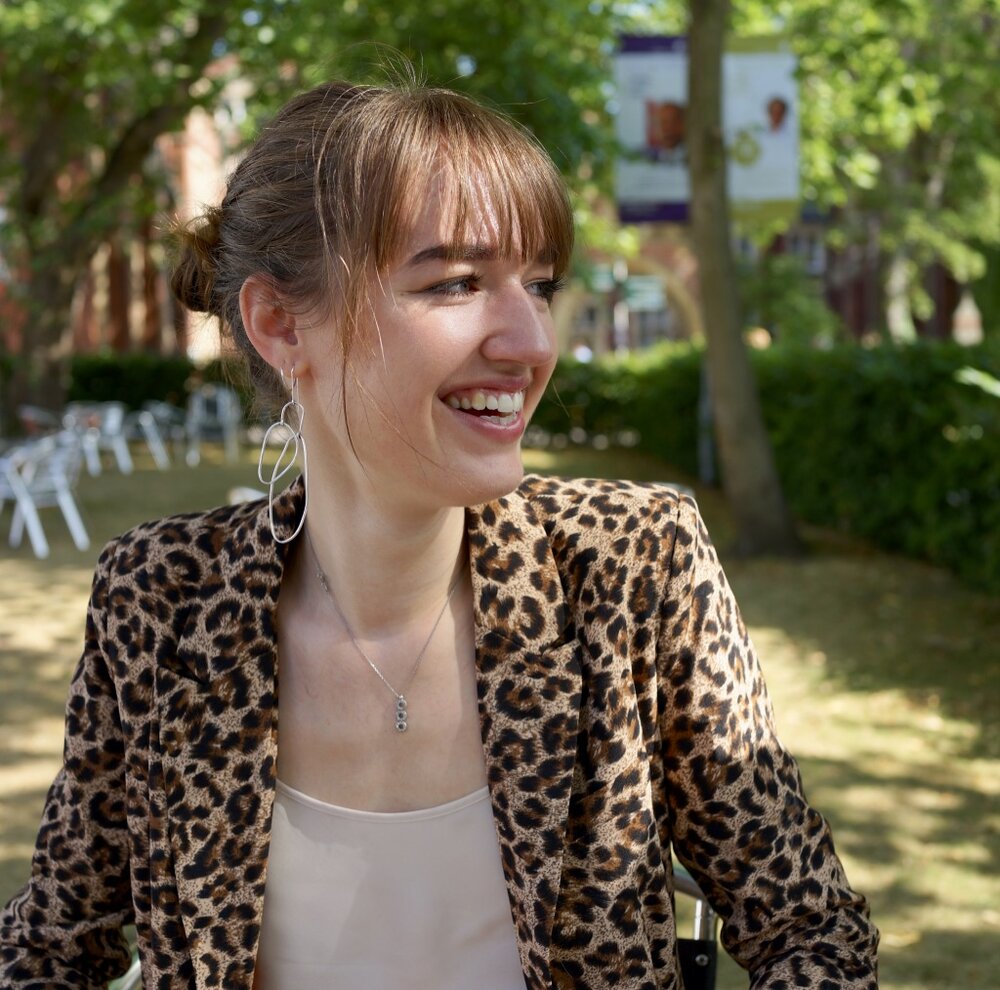From Farm to Cup: Sustainable Coffee 101
Posted by Pawan Saunya onCoffee is beloved everywhere for its energy inducing abilities and indulgent taste. However, the sad reality is that this backbone of the modern world generally comes at an unsustainable price.
The sustainability issues surrounding coffee can be seen at all stages of production- starting in the growing phase. Traditional farming practices have been passed on through families for decades, and because they were devised before the development of pesticides and fertilizers, these practices are chemical-free and cultivate healthy soil. This method of production is called shade-grown, as the coffee grows in shade beneath the forest canopy- how coffee naturally grows. However, this isn’t common practice.
To keep up with growing demand, most coffee is grown in full sun on land that has been cleared of trees. This method of growing is referred to as sun-grown. It hurts biodiversity, soil health, and water quality due to its use of chemicals and deforested land. In addition, a lot of farmers who grow using this method are usually treated unethically and aren’t paid a fair wage, and some are working under forced labor.

The next stage of coffee production, processing, is a source of waste and pollution. After coffee is picked, the bean has to be separated from the cherry. This process results in pulp waste, which is often dumped into aquatic ecosystems, harming soil and water health. The processing of coffee also requires a lot of water, and the processing plants discharge effluent that can be greatly problematic to water quality if not properly disposed of.
After the beans are processed, they’re pretty much ready to be packaged and sold. If you’re like 30% of Britons, you buy coffee that is packaged in plastic pods. These pods are only recyclable if you separate out the plastic components, which is relatively time-consuming. If you don’t buy the pods, you probably buy grounds packaged in plastic bags that aren’t recyclable or compostable. The brewing process also requires the use of paper filters, which require a lot of water and energy- not to mention they’re single-use.
The next stage in the coffee process is brewing, a process that ends with spent coffee grounds as a waste product. 500,000 tons of spent coffee grounds are created each year in the UK. If these grounds are sent to the landfill, rather than being reused or composted, they emit around 1,800,000 tonnes of carbon as they break down.
After your coffee is brewed, you need a vessel to put it in. Unfortunately, for the average coffee connoisseur, this vessel of choice is often a single-use paper cup. In the UK, 2.5 billion single-use coffee cups are used each year- this is enough coffee cups to stretch around the planet 5.5 times. These cups can’t be composted, because they’re generally lined with plastic, nor can they be recycled at most facilities.

Courtesy of The Rolling Bean
What You Can Do:
While each stage of the coffee production process has an unsustainable component, there is a lot that consumers can do to make their coffee habit more sustainable.
Buy shade-grown and fair trade coffee from producers who cultivate personal relationships with their farmers to ensure fair labor practices (Cafédirect, La Colombe, Deans Beans)
Buy your coffee in bulk with a reusable bag to avoid plastic packaging (learn how to make your own reusable bag out of scrap fabric here)
If you use a pod machine for your coffee, buy a reusable pod that you refill with coffee grounds each use
Use a reusable coffee filter rather than paper ones
Reuse your spent coffee grounds to create body scrubs, grow mushrooms, eliminate odors, and so much more
Refuse single-use coffee cups by using a reusable mug (preferably a mug or thermos that you already have on hand)

Kayla Guilliams
Is the blog manager for Zero Waste Club, combining her love for writing with her passion for all things environmental sustainability. She is currently a student at the University of North Carolina at Chapel Hill where she is studying journalism, environmental studies, and food studies in hopes of building a career in environmental activism. You can find her on Instagram as @kaylaguilliams.
Make Food From Halloween Pumpkin Waste | 3x Recipes.
Posted by Pawan Saunya onCarving pumpkins this week for Halloween? Don’t just carve it and throw the insides away! Why not make some delicious food with it too!
The UK is expected to waste 8 million pumpkins this year, so please consider using your pumpkin for food as well as decoration.
1) Toasted Pumpkin Seeds Spice Mix:
1/2 tsp Salt
1/2 tsp Pepper
1/2 tsp Smoked paprika
1/8 tsp Chilli flakes
2) Skin-on Pumpkin Chips spice mix:
1 tsp Za’atar
1/2 tsp salt
1/2 tsp pepper
3) Vegan Pumpkin Pie Ingredients:
400g pumpkin puree
175ml full fat coconut milk
30g cornstarch
130g brown sugar
50ml maple syrup or agave nectar
1 tsp vanilla extract
1 tsp salt
2 tsp cinnamon
1 tsp ginger
1/2 tsp nutmeg
1/2 tsp all spice
1 pack of ready-made shortcrust pastry (or home-made!)
Let us know below if you have any sustainable tips for the Halloween period!

Maddie Vos
is in charge of maintaining the Zero Waste Club community through regular video content. A keen videographer, she wants to spread the message of sustainability to the masses. She currently is living and working in London, and enjoys yoga and art in her free time.
DIY: Delicious Crisps From Veggie Peels
Posted by Pawan Saunya onWhether a recipe calls for peel-free vegetables or you simply don’t like eating them, veggie peels are one of those waste products that are inevitably created no matter how hard you try to curb your waste.
These peels are often tossed in the landfill or composted, meaning the ability of them to be turned into scrumptious creations that avert food waste and save money is often overlooked.
The most common way for veggie peels to be reused is in creating veggie broth, but they can also be used to create a cheap, delicious alternative to traditional crisps.
All you have to do is collect your veggie peels, season them with olive oil and a spice blend of your choice, and then pop them in the oven. You will then have a delicious batch of crisps that your eco-conscious heart can feel good about eating.

Maddie Vos
is in charge of maintaining the Zero Waste Club community through regular video content. A keen videographer, she wants to spread the message of sustainability to the masses. She currently is living and working in London, and enjoys yoga and art in her free time.

Kayla Guilliams
is the blog manager for Zero Waste Club, combining her love for writing with her passion for all things environmental sustainability. She is currently a student at the University of North Carolina at Chapel Hill where she is studying journalism, environmental studies, and food studies in hopes of building a career in environmental activism. You can find her on Instagram as @kaylaguilliams.
DIY: Zero Waste and Vegan Ice Cream
Posted by Pawan Saunya on1.6 million edible bananas are thrown away each year in Britain- often because they get too ripe for people to eat. Luckily, you can easily avert these bananas from the waste stream by freezing them. Freezing these overly ripe bananas gives you a sweet, creamy addition to your smoothies, or a perfect base for vegan ice cream.
Dairy ice cream uses ingredients like milk, cream, and eggs for the base. These ingredients are all water, land, and resource-intensive compared to plant-based ingredients, and have a higher carbon footprint.
Dairy ice cream also has ingredients like sugar, chocolate, vanilla, and sometimes palm oil. Palm oil is a notably unsustainable ingredient because it drives deforestation in the Amazon, which increases forest fires and carbon emissions.
Buying vegan ice cream will ensure you steer clear from resource-intensive dairy, but it won’t necessarily ensure that you steer clear from palm oil or other potentially impactful ingredients. The best thing you can do to ensure your vegan ice cream is low impact (and package free) is to make it yourself.
To make your vegan ice cream, use frozen bananas and non-dairy milk instead of dairy and eggs. This way, you’re averting bananas from being tossed in the landfill, and you’re indulging in a treat that has a lower impact than traditional ice cream. Plus, it tastes great.
All you have to do is blend together bananas and non-dairy milk until smooth, and then combine the mixture with ice cream toppings of your choice and stick it in the freezer. You’ll have vegan ice cream in no time.

Maddie Vos
is in charge of maintaining the Zero Waste Club community through regular video content. A keen videographer, she wants to spread the message of sustainability to the masses. She currently is living and working in London, and enjoys yoga and art in her free time.

Kayla Guilliams
is the blog manager for Zero Waste Club, combining her love for writing with her passion for all things environmental sustainability. She is currently a student at the University of North Carolina at Chapel Hill where she is studying journalism, environmental studies, and food studies in hopes of building a career in environmental activism. You can find her on Instagram as @kaylaguilliams.
5 Ways to Repurpose Food Waste
Posted by Pawan Saunya onIt’s no secret that food waste is a huge issue around the globe. Roughly ⅓ of annual global food production goes to waste, and if food waste was a country, it would be the third-largest emitter of greenhouse gases behind the U.S. and China. These emissions account for the emissions created from growing and processing the waste food, as well as the methane that the food releases when it sits in a landfill. Luckily, food waste is an issue that consumers can play a big role in curbing. Meal planning, freezing surplus produce, buying single bananas and composting food scraps are all effective ways to reduce food waste and cut related emissions. There are also ways to repurpose your food waste into valuable beauty, cleaning, and food products. Here are our top five ways to repurpose your food waste at home.
Donate it
According to the NRDC, ⅔ of the food we throw away is potentially edible. This is because a large amount of food waste stems from consumers overbuying and overpreparing, leaving them with too much food to eat. If this ever happens to you, donate your excess food to your local food bank, or create a free pantry in your neighborhood to give back to your community. If you have extra funds, go to the grocery store and buy up food that is on the brink of going bad, and take it to a food bank or put it in your free pantry. Just make sure the food is 100% edible before donating.

Use citrus peels in cleaners
If you’re looking to live a more eco-friendly life, you’re probably going to want to make your own cleaners. Traditional household cleaners are chocked full of toxic ingredients and are packaged in plastic. To make your own, combine your citrus peel scraps with ⅔ cup of white vinegar and let it infuse for at least a week. Then, put one part citrus-vinegar and one part water in a spray bottle, and use it as you would a normal house cleaner. This is a great way to repurpose your citrus peels, and a great way to avoid using toxic cleaners.

Use coffee grounds in exfoliating scrubs
If you drink coffee every day, your morning ritual probably consists of throwing away coffee grounds. If you’re like me, you store them in a mason jar in your fridge, because coffee grounds feel too expensive to throw away. Lucky for me, these coffee grounds don’t just sit in my fridge with no use- there are a ton of ways to repurpose the grounds into valuable goods. My favorite? An exfoliating scrub. Exfoliating scrubs can be relatively expensive, so making my own with a waste product I inevitably create is a win-win. All I do is combine two parts coffee grounds and 1 part oil (olive, coconut, or avocado), and then use it in the shower like I would any other scrub. You can also add essential oils or vanilla extract. Don’t use this scrub more than once a week- it could hurt your drain.

Make veggie broth
Vegetable peels, seeds, tops, stems… food waste from vegetables really adds up. But, instead of throwing them away, store them in your freezer and use them to make veggie broth! All you have to do is collect your veggie scraps, and then combine them in a pot with water, garlic, and any other seasonings you see fit. Simmer it, strain it, and voila- you have veggie broth!

Make Croutons
Making croutons is a great use of stale bread or bread that you won’t otherwise eat. All you have to do is cut the bread into cubes, drizzle it with olive oil and seasonings, and bake it. Easy and delicious.

How do you repurpose food waste?

Kayla Guilliams
Is the blog manager for Zero Waste Club, combining her love for writing with her passion for all things environmental sustainability. She is currently a student at the University of North Carolina at Chapel Hill where she is studying journalism, environmental studies, and food studies in hopes of building a career in environmental activism. You can find her on Instagram as @kaylaguilliams.
